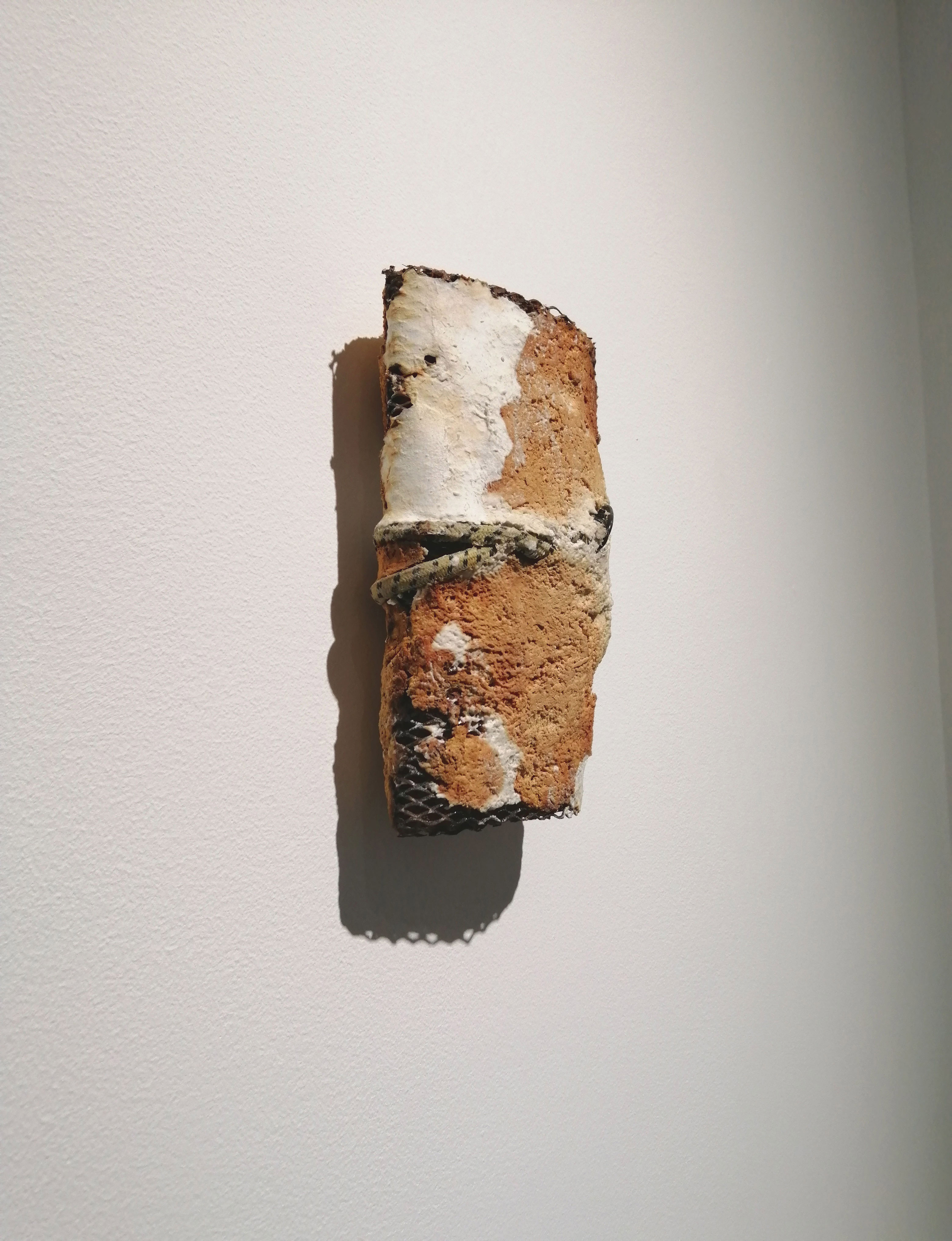- The city is the home is the city is the home -
Exhibition review (Galeria Liminare, Lisbon, sep.-oct. 2020)
Exhibition review (Galeria Liminare, Lisbon, sep.-oct. 2020)
Since the Covid-19 spread, the exhibition “A cidade é a casa é a cidade é a casa” was the first one I physically visited in Lisbon. It aimed at investigating the changes in the space of the city, intended as a threatened public space, and the relation between it and its inhabitants. In recent months I have read articles, essays and special contributions dedicated to the theme of the post-pandemic city. I attended lectures on youtube channels and via zoom on the urgency of how the cities should be planned, re-thought, re-organized to reduce inequalities and improve the accessibility. The exhibition was, after some time, the first tangible experience of a research, which although it was not supposed to be related to the still on going state of emergency, it revealed the extreme need to reflect on the mutual influence between us and the urban environment where we live.
The Galeria Liminare is a physical space recovered thanks to the municipality of the Lumiar district in its headquarter, in one of the northernmost area of Lisbon, and whose name Liminare recalls the name of its street Alameda das Linhas de Torres, which pays homage to the defensive line Linhas de Torres Vedras set up in 1810 during the French invasions.
Entering the complex already means physically experiencing the core of the exhibition. The small scale of the former Palacete da Quinta das Conchas, a typical 18th century noble country residence with its airy courtyard and gently curvy profiles, is amplified thorough the giant rectangular apartment block that stands in the background like a heavy and compact urban curtain, constrained into the anonymous sequence of windows and balconies within a rigid orthogonal concrete mesh.

Palácio da Quinta das Conchas, Lumiar
©esterdonninelli
©esterdonninelli
The curators* have worked for a year to conceive and produce an exhibition that has become a demanding quest, where five artists with different art practices directly faced the concept of space. In Mapping the Space #2 (2017) Ana Battaglia Abreu used a flexible structure to measure and adapt to different space conditions, facing difficulties in achieving an ideal balance between the body’s need, desire and possibilities to manipulate and changing the configuration of the structure and the conditions of the space, as embodied by the performance. In the space of the gallery the structure seems to find a resting point, which activates our body in a three-way dialogue between us, the space and the installation, as when we experience urban pressures. The work Sem título (2011) by Luís Plácido Costa objectifies the ambiguity of the space by showing the interrelation between closure and openness as elemental characteristics of architecture. An unfinished territory consisting of plan and an open layout without any reciprocal correspondence underlines the ambiguity of the space beyond the apparent objectivity. The space formed by and through its use, both collective and individual, is investigated and represented in the three next works. Marta Soares with Sem título III (2018) acted directly on the walls in public spaces and later the layers were detached and placed on canvas, an act similar to detach frescos from the wall in the restoration interventions. The action generates a piece where the artist collects the “stories” of many layers of the wall and seals them by joining them with his gestures. The video of Inês Norton’s performance Archivilisation (2015) shows the artist using archive boxes as bricks to build and deconstruct walls in loop. Collective and individual memory merge in the construction of space, meaning architecture as a personal gesture, which evokes the gesture of the entire community. In Sem título (2017) Bruno Cidra created an archaeological urban rest, a frozen conglomerate of contemporary materials which, without unveiling a determined history, leads us towards the aggressive appropriation of everyday space considered irrelevant, because it has neither historical nor economically valuable.
The curatorial approach to the theme was to use the artists' practice in order to explore urban space in different ways, using appropriation, creation, objectification as investigation tools. During the 1970s, architects used their knowledge of space to actively intervene on it and on everyday urban life. At that time there was the ambition to change into a better way the current relevant issues. In my opinion, architecture cannot change the society. Of course, bad or good architecture can be evaluated according to the quality of life it allows. Of course, we already know that some "space solutions" encourage exclusion. But space is never permanent. Architecture comes from a human activity capable of adapting the environment before the human being will start to adapt to it. Just like art, architecture can be a practice for investigating space by considering it as measurable, as a concept, as a way of life.
It is time to step out of the gallery space and to meet face-to-face the territory of the city face-to-face, to experience its ambiguity and it constitutive elements. Visitors will come to their own conclusions.

Mapping the Space #2 (2017), Ana Battaglia Abreu
©esterdonninelli

Sem título ( 2011), Luís Plácido Costa
©esterdonninelli

Archivilisation (2015), Inês Norton
©esterdonninelli
©esterdonninelli

Sem título (2017), Bruno Cidra
©esterdonninelli
©esterdonninelli
Exhibition: The city is the house is the city is the house (EN)
A cidade é a casa é a cidade é a casa (PT original title)
Location: Galeria Liminare
Date: 5th Sep.-18th Oct. 2020
Curators*: Ana Bacelar Begonha, Ana Lanita, Carla Pacheco, Cheila Peças, Giovana Jenkins, Inês von Hafe Pérez, Inês Silvestre, Joana Alemão, João Cristóvão Leitão, Leane Lepre Jorge, Leonor Bica, Luisa Tudela, Mafalda Matos, Marcela Endreffy, Maria Mamourières, Marisa Pinheiro, Nicoletta Pavese, Patrícia Costa, Patrícia Lima e Rebeca Goldstein de Mendonça.
15th Oct. 2020
